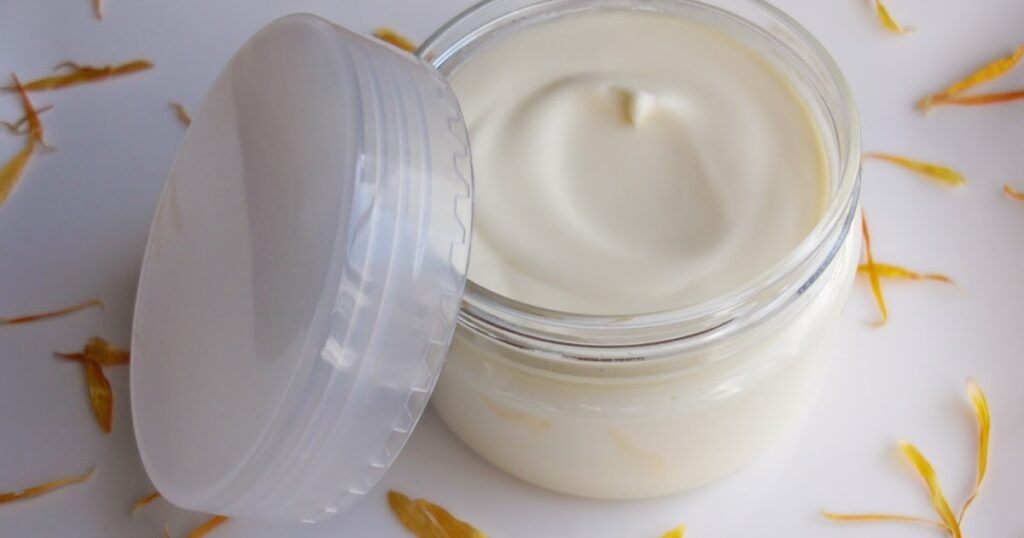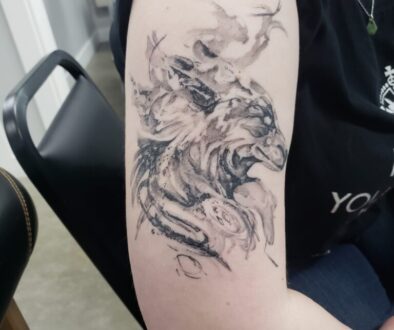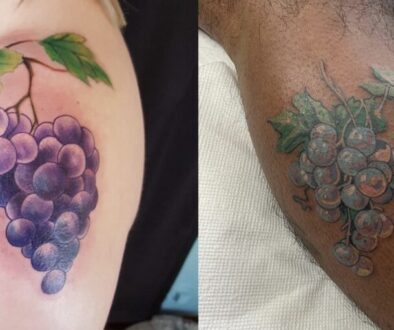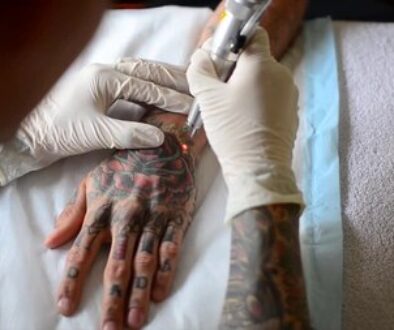Pain And Tattoos – How Does Tattoo Numbing Cream Work And Is It Safe To Use?
|
Listen to this Article::
|
Table of Contents
What is Pain?
The pain response in a body is complex. Really complex. Without having to go into a lecture about different regions of the brain, several types of nerve fibers, and the pathways in which chemicals travel to create these sensations, we are going to describe pain in the most rudimentary way possible by getting a definition from the foremost authorities in pain, the IASP.
Pain is something difficult to define. Luckily, some people specialize in it. We went to the IASP (The International Association for the Study of Pain) to explain what pain is. The IASP defines pain as, “An unpleasant sensory and emotional experience associated with, or resembling that associated with actual or potential tissue damage… Pain is always a personal experience that is influenced to varying degrees by biological, psychological, and social factors.”[1] 
The feeling of pain, like the sensation you get when receiving a tattoo, is a survival mechanism. Pain has helped humans stay alive since the dawn of our species. Could you imagine if you did not feel pain? While the thought may remind you of a superhuman drawn in the modern-day comics, the reality is that pain is a symptom of our interaction with the external world. Not feeling pain can result in dire consequences.
Before you read on, take a few minutes to watch this video about numbing creams. It briefly covers what is explained in the article below and is a good primer of what’s to come.
When Pain Changes into Suffering.
We also need to expand on a critical thought about pain. Pain is a symptom that should have a limited period of efficacy. Pain should be an acute reaction to stimuli. Something fleeting and has little influence over actions taken by a person, except to stimulate intention that removes the person from damaging stimuli. During a tattoo, a person forces themselves to sit through pain. It comes in spurts (thankfully) as the artist doing the work must start-stop constantly.
The act of dipping a tube into an ink cup gives the person receiving the tattoo a brief respite. This respite allows the body to adapt to the pain and reset before the tattoo resumes. This dance continues until a client’s pain morphs into suffering. Suffering is the point in which a client has little to no ability to sit longer for the tattoo unless they force their body to remain when it wants the session to end.
Why is Pain Important?
Pain is subjective. That means that everyone feels pain differently. Since each of our lives, memories, and individual biologies are different, it is no wonder why we all feel pain in a way that is unique to ourselves. People may cry when getting a paper cut, while others barely blink when breaking a bone. This is the same when receiving a tattoo. Some people can sit for 9+ hours without taking a break; others have a tough time making it 10 minutes before crying. This must be why many people are looking into numbing creams before getting a tattoo.

But pain is necessary to our survival. By feeling the pain of a tattoo, your body can communicate what is going on with it. As many clients know, there comes a time during an extended sit when the pain becomes more than it was earlier. The constant pinch feeling becomes a severe stabbing pain. The burning becomes so bad you feel like you are on fire. The pain becomes intolerable. It changes into suffering.
This is your body telling you it has had enough. Pushing past this mark creates a situation where the body is forced to cope with a flood of hormones and chemicals. This flood decreases the body’s ability to heal.
If suffering continues, a greater chance of the tattoo taking longer to heal may occur. There is also a greater chance of the tattoo resulting in a scar, the client falling into a state of shock, as well as permanent health issues arising due to the stress.
How Pain Affects Healing.
Pain is the precursor to our body’s healing processes firing up. Once tattoo pain is felt, the body responds by releasing chemicals that start a cascade of processes to heal the newly created wound. If the wound is small, there is little pain, and the body does not have to work hard to heal. If the wound is great, the body feels much more pain and is stimulated to work harder to heal what has been damaged. However, there is a point when the body has had too much, and it cannot take any more. Pain is directly connected to a hormone called cortisol.
The Role of Cortisol in Wound Healing
Cortisol, a chemical found in the body, is released when stressed. This chemical can mess with the body’s healing forces by slowing the immune response necessary to remodel a wound. The higher the amount of cortisol in the body, the slower a wound heals. This means that the amount of pain you feel during a tattoo affects the healing process. But cortisol is necessary for wound healing, which is totally like your body to want a homeostatic environment.
Too much cortisol can be damaging towards healing a wound, but just the right amount can increase the body’s ability to heal a minor wound, like a tattoo. Cortisol is also needed to regulate blood pressure, fight inflammation, and ensure your blood and vessels function correctly. This is where numbing creams come into play. 
People use numbing cream to fight pain, and that pain is what releases cortisol into the body! So, it must be a wonderful thing to use, right? I still contend it is not a viable option to be used as much as it is currently.
More on How Numbing Creams Work for a Tattoo.
The nerves that make up our sense of touch and our interpretation of pain come in a few varieties. To simplify the explanation, we will lump each individual type into a group called sensory nerves.
Sensory nerves are conductors of pain, pressure, temperature, and other sensations. Their function is to send electrochemical impulses to the spinal cord to be transported and translated by the brain. Things like duration and intensity are interpreted by regions of the thalamus and sensory cortex in the brain.
Numbing creams work by blocking sensory nerve ends in the skin by stuffing the entrance for signaling chemicals with chemicals that look and act like what your body naturally produces. By blocking these chemicals from entering the nerve, the body cannot interpret the real pain signals produced during a tattoo.
What do I think About Using Numbing Cream on a Tattoo?
After all the research and experience I have obtained I still found this question difficult to answer. On the one hand, I want every client that comes in to get a tattoo to have a wonderful experience. Usually, this infers a situation where we mediate the pain they will feel. Because of this, I want to recommend this to clientele. 
On the other hand, knowing that pain is a symptom that lets us understand how our body is doing, I cannot in good faith suggest using something that would deaden that. Beyond that, the health consequences far outweigh the potential benefits. Tack that on top of the short duration, a numbing cream works, and I am confident that I cannot recommend such a product to any client. This leads to a quandary I fought with for a few years: Should you use numbing cream or not?
In my opinion – no. Though, there is a caveat to that statement.
If Tattoos Are Painful, What Is Best for the Client?
This all comes down to what is best for a client. While I agree that clients do not enjoy the feeling of a tattoo, the detriments of using numbing cream for a tattoo outweigh their benefits. You can see the list of side effects below and hopefully understand why we take this topic so seriously. Beyond that, the chances that a client can manage the pain of the tattoo are greater than if they could not.
Take, for example, the total tattooed population of the USA. How could so many people (26% of Americans – around one hundred million people!) get a tattoo if the pain were unmanageable? The chances of that are slim to none.
Humans are risk-averse. We choose to follow the safer routes in life because we are hardcoded to stay alive. If a person went through a tattoo and reported that the experience was so bad that no one should go through it, we would not have a billion-dollar industry on our hands, would we?
Read our article if you want to learn more about what places are the worst to get tattooed:
Tattoo Pain, The Best and Worst Spots to Get Tattooed
Why Don’t I Recommend Numbing Cream for a Tattoo?
Because tattoos are only slightly painful to most clients, I recommend alternative methods to deal with the eventual pain. There are many ways to deal with the fear of a tattoo, or even the pain of a tattoo, without having to numb the area before a procedure. If fear significantly influences whether to use numbing cream before a tattoo, fearful clientele should think about why they want to get a tattoo.
Is there peer pressure or other things that are creating undue pressures? Do they understand the process of a tattoo correctly? Perhaps the client has had a bad experience with a previous tattoo artist and is reluctant to get a tattoo? Whatever the reason, care should be taken, along with time, to ensure a safe and enjoyable experience.

The use of numbing creams won’t help with these fears. It only helps with pain.
What Are the Consequences of Using Numbing Cream on a Tattoo?
Some issues may arise after using numbing creams on a tattoo. The consequences of using numbing creams range from tingling or itching to death! When we say that absolute care should be taken before jumping into using a product like this, we mean it!
The List of Possible Side Effects:
- Localized Reactions – Common Side Effects-
- Paleness of the skin, redness, alterations in temperature sensation, swelling, itching, and rash.
- Signs You Have a Sensitivity or Have Used Too Much-
- Tinnitus (ringing of the ears), lightheadedness, circumoral numbness (numbness of the mouth), diplopia (double vision), metallic taste in the mouth.
- Seek Medical Attention Immediately-
- Nystagmus (eyes that shake), slurred speech, localized muscle twitching, fine tremors.
- You Are in Big Trouble-
- Focal seizures, which may advance towards tonic-clonic seizures.
- Respiratory depression which may lead to a coma.
What Can Increase the Chances of Having a Reaction?
When applying numbing creams, the length of time, amount of product, and surface area covered with numbing creams are the trifecta of things to pay attention to. The more you apply, over the larger area, and the longer it is on your skin, the more likely you will have a side effect. If the use of the tattoo numbing cream is going to happen, be sure to take a couple of days and gather data on your health before use.
Keeping a log of your resting heart rate, blood pressure, amount of sleep, and a detailed stress log can help determine what the best days of the week, or times of the day, will be. You can use this to your advantage and schedule a tattoo when you know your body will be at its best.
When You Should Absolutely Not to Use Numbing Creams (Unless a Doctor Says It’s Ok).
There are a few times when the use of a tattoo numbing cream is never recommended:
- Suffering from liver failure.
- If your BMI is very low/very high.
- You are taking vasoconstrictors or medications for hypertension.
- If you have a history of sensitivity to anesthetics.
- You plan to use more than 1-2g of product per 10cm2 of the skin surface (based on 5% lidocaine by volume)
- If you are pregnant, nursing, or lactating.
- People with congenital or idiopathic methemoglobinemia.
- If you suffer from high blood pressure or heart disease.
Also, the metabolites of specific numbing agents are known carcinogenic compounds. These metabolites can be found in dosages ranging around 60g/400cm2 of skin that was applied for 3 hours for most people studied. If you plan to numb an entire leg, arm, whole back, or other sizable parts of your body, think again. That large dose of numbing cream can tally up substantial amounts of these metabolites in the body, as well as guarantee a major side effect.

What Alternatives Are There to Tattoo Numbing Creams?
There won’t be a health routine, use of ice, or meditation that works as effectively as a tattoo numbing cream, but they can help. Learning deep breathing techniques can help take the mind away during difficult sections of the tattoo. You can also improve your general health before a tattoo by going on long walks, eating healthy, and creating an environment where your body is better capable of handling a tattoo. If a doctor has given permission, the use of NSAIDs for pain after a tattoo may be effective in decreasing discomfort. Swelling can be reduced by using pressure or an ice pack on the affected area.
In Conclusion
I believe the risks far outweigh the consequences of tattoo numbing creams. While science has shown they effectively decrease the pain felt during many medical procedures, the unregulated, under-educated use of these substances could lead to serious health consequences. Anyone choosing to use these substances should do their due diligence and research what their use means to their health. Talk to a doctor and develop a pain management plan before resorting to using these products.
References
Raja SN, Carr DB, Cohen M, et al. The revised International Association for the Study of Pain definition of pain: concepts, challenges, and compromises. Pain. 2020;161(9):1976-1982. doi:10.1097/j.pain.0000000000001939
Woo, Kevin Y. PhD, RN, ACNP, FAPWCA Exploring the Effects of Pain and Stress on Wound Healing, Advances in Skin & Wound Care: January 2012 – Volume 25-Issue 1. -p 38- 44doi:0.1097/01.ASW.0000410689.60105.7d
Sobanko JF, Miller CJ, Alster TS. Topical anesthetics for dermatologic procedures: a review. Dermatol Surg. 2012 May;38(5):709-21. doi: 10.1111/j.1524-4725.2011.02271.x. Epub 2012 Jan 13. PMID: 22243434.
Body modification in the United States – Statistics & Facts | Statista
Cardiovascular Consequences of Severe Acute Pain (practicalpainmanagement.com)
Footnotes
[1] While tissue damage is resultant of mechanical or environmental factors, it does not include the potential of psychological pain. To avoid the quantification of psychologically interpreted pain and its subjectivity, the idea of psychological pain is, and should be, qualified as real. There is no way to quantify the personal experience. There is no equivalence between the emotional and physical pathways to pain, even if they suffer the same biological result. From the IASP, “Activity induced in the nociceptor and nociceptive pathways by a noxious stimulus is not pain, which is always a psychological state, even though we may well appreciate that pain most often has a proximate physical cause.
The Extra Stuff.
We also have a YouTube channel that breaks down commonly asked tattoo questions. You can find it by following this link: Better Tattooing YouTube Channel As always, we appreciate feedback:
Why don’t you buy us a coffee to show us some support!
https://buymeacoffee.com/bettertattooing
Or buy some of our merch!





